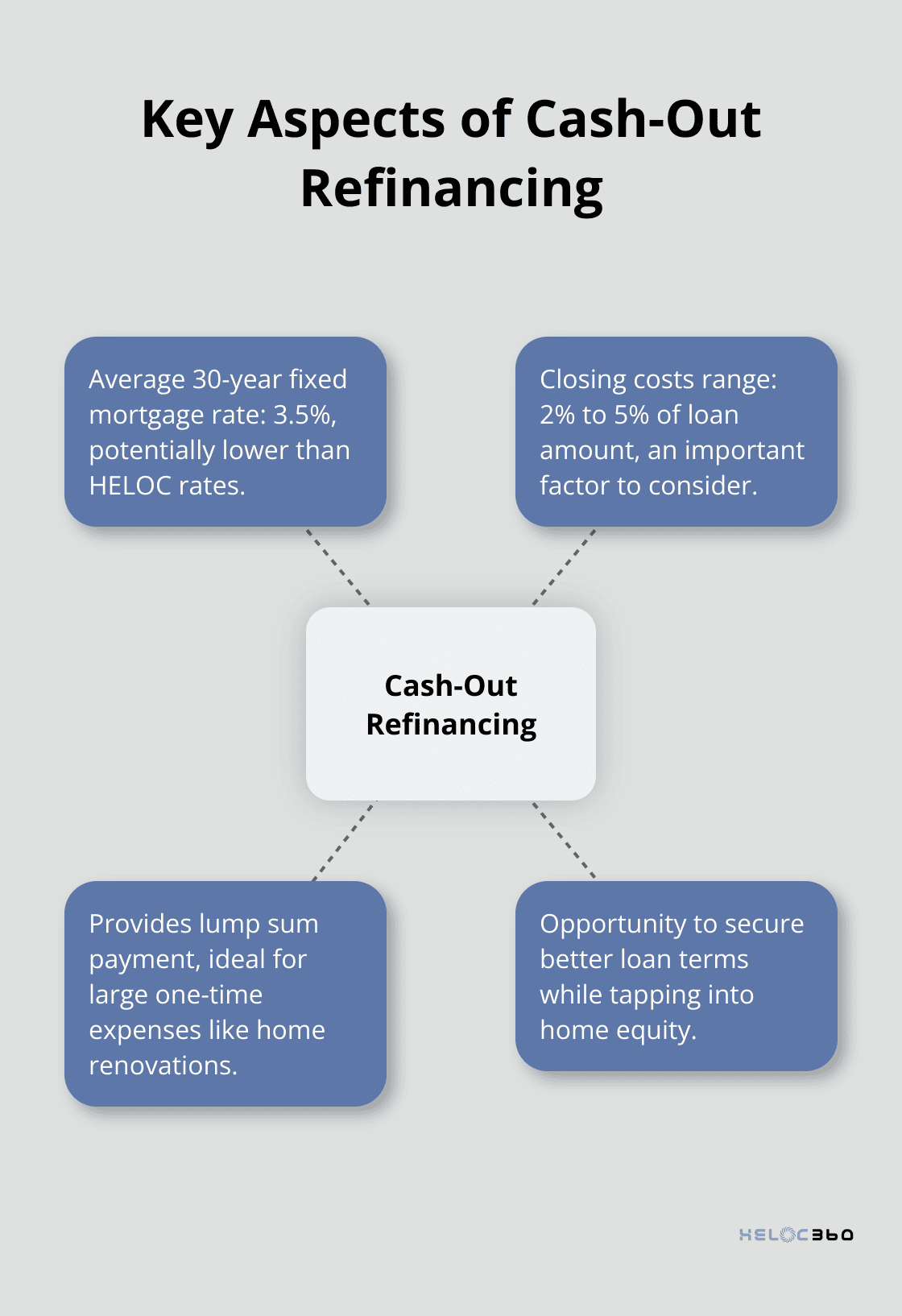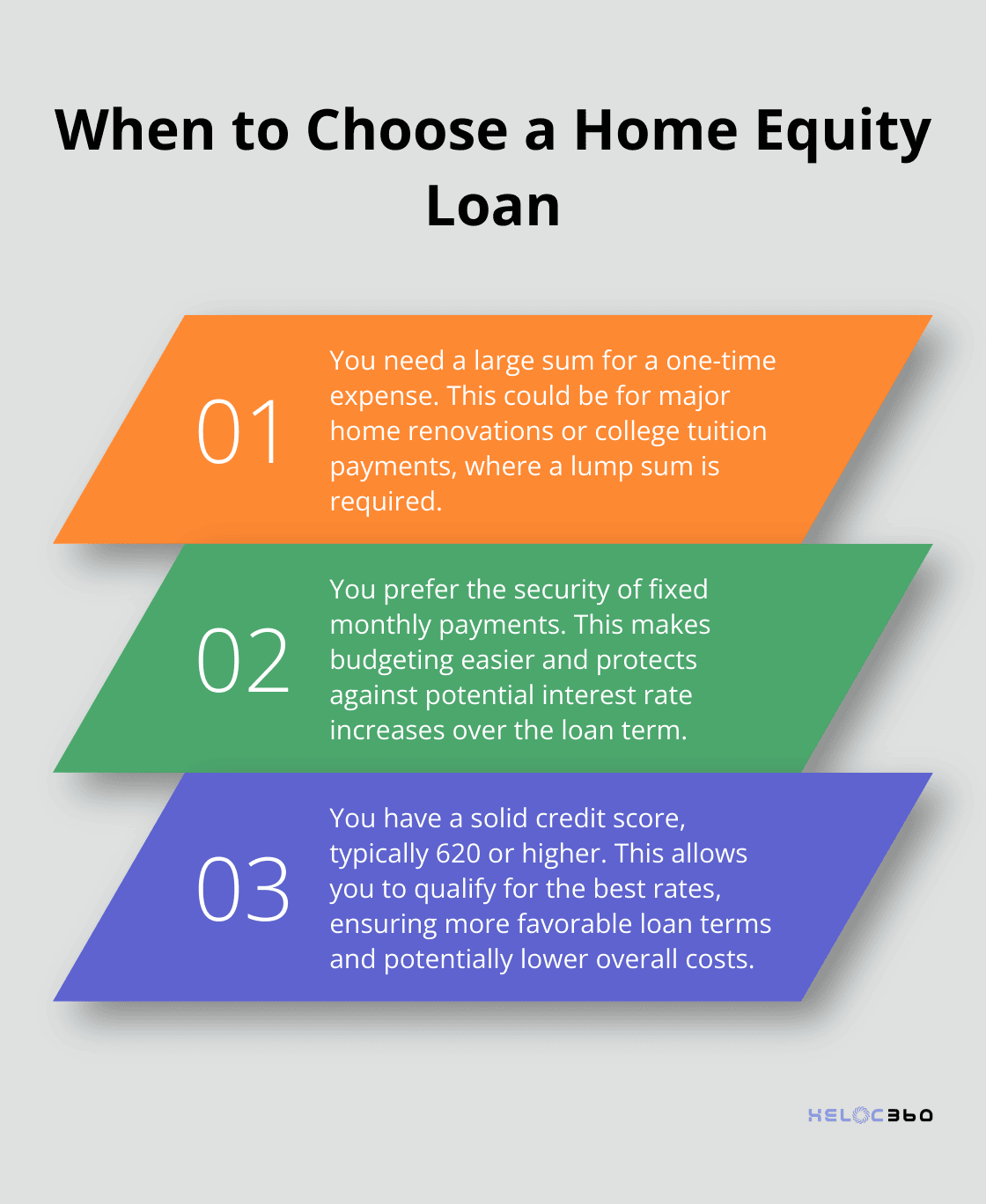Homeowners often turn to Home Equity Lines of Credit (HELOCs) for financial flexibility, but these aren’t always the best solution. At HELOC360, we understand that every homeowner’s situation is unique.
That’s why we’re exploring smart HELOC alternatives that might better suit your needs. From cash-out refinancing to home equity loans, let’s dive into options that could provide the financial leverage you’re seeking.
What Are HELOCs and Why Consider Alternatives?
The Basics of HELOCs
Home Equity Lines of Credit (HELOCs) allow homeowners to borrow against their home’s equity. With a HELOC, you’re borrowing against the available equity in your home and the house is used as collateral for the line of credit. HELOCs offer a revolving credit line with a set draw period (usually 5-10 years) during which borrowers only pay interest on the amount used.
Potential Pitfalls of HELOCs
While HELOCs offer flexibility, they come with certain risks:
- Variable Interest Rates: HELOC rates can fluctuate, leading to unpredictable payments.
- Risk of Overborrowing: Easy access to funds can tempt homeowners to take on more debt than they can manage. A study by the Urban Institute found that homeowners who use HELOCs for non-essential spending are 30% more likely to face financial distress.

Why Homeowners Seek Alternatives
Many homeowners now look for more stable and predictable financing options due to these challenges. Fixed-rate alternatives provide peace of mind, especially in a rising interest rate environment. Some homeowners prefer structured repayment plans over the open-ended nature of HELOCs.
Exploring Your Options
Cash-out refinancing and home equity loans are two popular alternatives that offer different advantages depending on your financial goals and circumstances. These options can provide:
- Lump-sum payments
- Fixed interest rates
- Potentially lower overall costs
For instance, cash-out refinancing typically incurs closing costs, which can range from 3% of the loan amount, while HELOCs typically do not have these upfront costs.
As we move forward, let’s examine these alternatives in more detail to help you make an informed decision about which option best suits your needs.
Cash-Out Refinancing: A Comprehensive Solution
The Mechanics of Cash-Out Refinancing
Cash-out refinancing allows homeowners to tap into their home equity while potentially securing better loan terms. This option replaces your existing mortgage with a new, larger loan and provides you with the difference in cash.
When you choose cash-out refinancing, you take out a new mortgage for more than you currently owe on your home. For example, if your home is worth $300,000 and you owe $200,000 on your mortgage, you might refinance for $250,000. This would give you $50,000 in cash (minus closing costs).

Cash-out refinance gives you a lump sum when you close your refinance loan. The loan proceeds are first used to pay off your existing mortgage(s), including closing costs and fees.
On average, closing costs range from 2% to 5%, meaning a $300,000 home could come with $6,000 to $15,000 in upfront fees.
Advantages Over HELOCs
Cash-out refinancing offers several benefits compared to HELOCs:
- Lower interest rates: As of July 2025, the average 30-year fixed mortgage rate is 3.5%, while HELOC rates average around 5.5%.
- Lump sum payment: This can be ideal for large, one-time expenses like home renovations or debt consolidation.
- Fixed rates: Unlike HELOCs with variable rates, cash-out refinancing often offers fixed rates, providing stability in your monthly payments.
Ideal Scenarios for Cash-Out Refinancing
Cash-out refinancing works best when:
- Current interest rates are lower than your existing mortgage rate.
- You need a substantial amount of money for a specific purpose.
For instance, if you plan a major home renovation that will cost $75,000, a cash-out refinance could provide the funds at a lower interest rate than a HELOC or personal loan. The home improvements could potentially increase your property value, making the refinance a strategic investment.
Long-Term Considerations
It’s important to consider the long-term implications of cash-out refinancing. Refinancing resets your loan term, which means you might extend your mortgage payoff date. Always calculate the total cost over the life of the loan before making a decision.
Cash-out refinances are particularly appealing now, as they often come with lower interest rates compared to home equity loans or HELOCs.
Cash-out refinancing offers a powerful way to leverage your home equity, but it’s not the only option available. In the next section, we’ll explore another alternative: home equity loans, which provide fixed-rate stability and might be more suitable for certain financial situations.
Fixed-Rate Home Equity Loans: A Stable Alternative
The Basics of Home Equity Loans
Home equity loans offer a stable alternative to HELOCs for homeowners who want to tap into their property’s value. These loans provide a lump sum with a fixed interest rate, which appeals to those who prefer predictable payments and have specific financial goals.
Unlike HELOCs, which function as a revolving line of credit, home equity loans deliver a one-time lump sum payment. This makes them ideal for homeowners who know exactly how much they need to borrow. The average home equity loan rate is 8.28% as of July 18, 2025, according to Bankrate’s regular survey of rates.
Home equity loans typically have terms ranging from 5 to 30 years, with most lenders offering 15-year terms. This longer repayment period can result in lower monthly payments compared to shorter-term financing options.
The Benefits of Fixed Interest Rates
One of the primary advantages of home equity loans is their fixed interest rates. This feature provides borrowers with consistent monthly payments throughout the loan term, which simplifies budgeting and protects against potential interest rate hikes.
For example, on a $50,000 home equity loan with a 15-year term and a 8.28% fixed interest rate, your monthly payment would remain consistent for the entire loan duration. This predictability can prove particularly valuable in a volatile economic environment.
Scenarios for Choosing a Home Equity Loan
Home equity loans often become the best choice when:

According to the 2025 NAR Remodeling Impact Report, homeowners can expect to recover on average only 60% from kitchen renovations.
Considerations and Risks
It’s important to note that like HELOCs, home equity loans use your home as collateral. This means that failure to repay could result in foreclosure. Always carefully consider your ability to repay before taking on any additional debt.
While home equity loans offer many benefits, they may not fit everyone’s needs. Some homeowners might find that other solutions better suit their requirements, especially if they need ongoing access to funds or anticipate fluctuating expenses.
Final Thoughts
Homeowners have several compelling HELOC alternatives at their disposal. Cash-out refinancing offers a comprehensive solution for those seeking a lump sum and potentially lower interest rates. Home equity loans provide the stability of fixed payments, catering to different financial needs and preferences.
Your personal financial situation plays a crucial role in determining the best path forward. Factors such as your credit score, current mortgage rate, long-term financial goals, and immediate cash needs all influence which option might suit you best. These aspects require careful evaluation to align with your overall financial strategy.
We at HELOC360 understand that navigating these choices can be complex. Our platform simplifies the process, providing you with the knowledge and tools needed to explore your options effectively. Whether you consider a HELOC or one of its alternatives, HELOC360 will guide you through every step of the journey.
Our advise is based on experience in the mortgage industry and we are dedicated to helping you achieve your goal of owning a home. We may receive compensation from partner banks when you view mortgage rates listed on our website.
